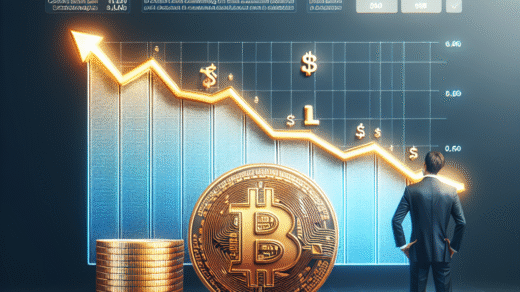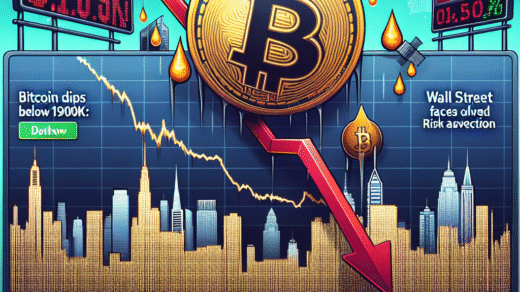Bitcoin (BTC) has recently experienced a stall in its bullish market momentum, with the cryptocurrency fluctuating between the $100,000 and $110,000 mark. Despite significant factors such as increased spot ETF inflows, robust stablecoin market capitalizations, and favorable regulatory news in the United States, Bitcoin’s price has remained directionless. This article delves into the underlying reasons for the current price stagnation and explores who might be behind the selling pressure.
Understanding the Current Bitcoin Market Dynamics
As Bitcoin enters a perplexing phase, questions arise: Who is selling BTC and why? According to Alexander Blume, managing partner at the SEC-registered investment adviser Two Prime, the current market landscape is characterized by a unique blend of speculative buyers and long-term investors. “Given the recent geopolitical turmoil, it seems logical that speculators and leverage traders are pulling back on their risk exposure, while new long-term investors are seizing the opportunity to buy the dip,” Blume explained in an interview with CoinDesk.
Short-Term Wallets and Profit-Taking Trends
Recent blockchain data from Glassnode reveals a noteworthy trend: wallets with a history of holding Bitcoin for less than a year have ramped up profit-taking activities. On a recent Monday, these short-term wallets were responsible for a staggering 83% of the total realized profits in the market. Moreover, wallets holding Bitcoin for six to twelve months contributed an impressive $904 million to the selling pressure, marking the second-highest year-to-date total.
This selling behavior by short-term holders follows an even more aggressive profit-taking spree by long-term holders in May and early September. Glassnode data indicates that long-term wallets, which have held their coins for over 12 months, recorded a peak realized profit of $1.2 billion just last week, with $324 million realized in profits the week prior.
Long-Term Investors and ETF-Driven Demand
Markus Thielen, founder of 10x Research, points out that long-term investors are strategically selling into the consistent demand generated by ETF inflows. “Long-term OG investors are effectively absorbing the inflows, which has contributed to a compression in volatility. However, a breakout is inevitable,” Thielen stated in a note to clients on Thursday.
Miners’ Impact on Bitcoin Selling Pressure
Another factor contributing to the selling pressure is the activity of Bitcoin miners. Data from IntoTheBlock shows that the balance held in miner wallets has declined from approximately 1.94 million BTC at the end of May to around 1.91 million BTC. This decline indicates that miners have offloaded roughly 30,000 BTC within a span of 20 days. Philippe Bekhazi, CEO of crypto platform XBTO, emphasizes that miners must continue to sell to manage their USD liabilities, adding complexity to the market dynamics.
Accumulation Trends and Next-Best Alternatives
Despite the recent price surge, substantial accumulation by both whales and smaller addresses has stalled since Bitcoin surpassed the $100,000 threshold. Benjamin Lilly, founder of Jarvis Labs, notes that accumulation patterns began to weaken once BTC breached the six-figure mark. “The slowdown in price is likely due to the enticing availability of next-best alternatives. With funding rates rising sharply, traders have found delta-neutral positions yielding 15-30% annual percentage yields (APY) appealing enough to de-risk their positions,” Lilly explained.
Delta-neutral trading involves shorting perpetual futures while simultaneously purchasing Bitcoin in the spot market when futures are at a premium, allowing traders to capitalize on price differentials while managing volatility risks.
Long-Term Perspectives: Diversification and Portfolio Allocation
Jimmy Yang, co-founder of Orbit Markets, suggests that Bitcoin’s evolution into a more stable asset class may impact expectations of outsized returns. “Investors can no longer bank on 10x or 100x returns in a short timeframe. Consequently, we’ve seen long-term holders begin to divest portions of their BTC holdings to diversify into other asset classes such as equities, gold, and private placements,” Yang noted, highlighting the strategic shifts in portfolio allocation.
What Lies Ahead for Bitcoin?
Looking forward, experts like Yang predict that the cryptocurrency market may not present much excitement in the near term, as Bitcoin continues to trade in alignment with equities and broader risk sentiment. “Both asset classes are hovering near all-time highs; if equities break higher, BTC is likely to follow suit,” Yang suggested. With the summer season setting in, market activity is expected to remain subdued in the short run.
Blume concurs, indicating that a cooling-off period for the BTC market is likely. “Considering Bitcoin’s surge from $75,000 to over $100,000 just weeks ago, a cooldown seems reasonable. It’s noteworthy that the dips in price have been relatively shallow, indicating strength for the next leg up,” he added.
Thielen emphasizes that traders should keep an eye on key price levels: $102,000 as a downside marker and $106,000 as an upside target. As the market grapples with the current selling pressure, the overarching sentiment among analysts remains cautiously optimistic about Bitcoin’s future trajectory.
Conclusion: The Path Forward for Bitcoin
The recent fluctuation in Bitcoin’s price can be attributed to a convergence of factors, including profit-taking by short-term holders, selling pressure from miners, and the dynamic interplay between long-term investors and ETF-driven demand. As the market navigates through this complex landscape, it remains vital for investors to stay informed and adapt their strategies accordingly.
For those looking to delve deeper into the world of cryptocurrencies, consider exploring how to buy Bitcoin and stay updated on the latest trends in the market.
Meta Description: Discover why Bitcoin’s price rally is stalled with insights into selling pressures from short-term holders, miners, and long-term investors. Stay informed on BTC’s market dynamics and future expectations.







